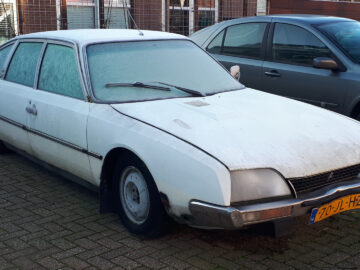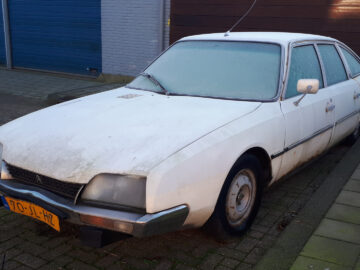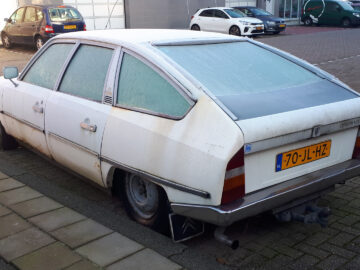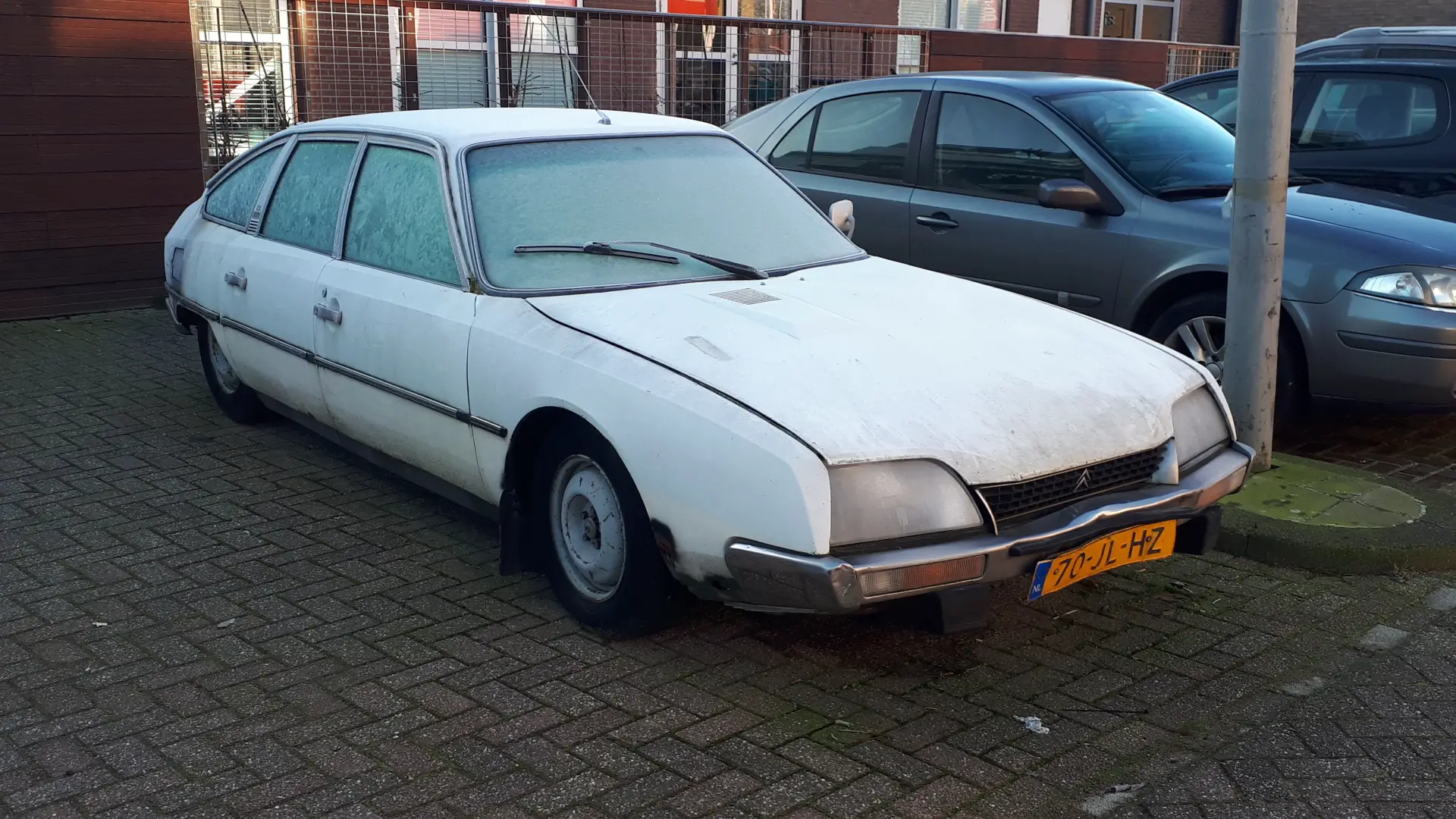Spotted: a Citroën CX 2000
In the 1970s, the famous Citroën ID/DS was in need of replacement. After all, that model dates back to the 1950s. You don’t just replace such a successful model, so Citroën went all out to develop a worthy successor. It appears in 1974 in the form of the Citroën CX.
Highly aerodynamic
Like the ID/DS, the Citroën CX stands out for its highly aerodynamic design with tapered rear end, but with modern lines. The CX not only looks aerodynamic, it is aerodynamic. Hence its type name, the symbol for the air resistance coefficient (for which Cw is also used). Incidentally, the design built on the smaller Citroën GS, already introduced in 1970.
The most striking part of the car in terms of design is the rear. Not only because it tapers, but also because of the concave rear window. This ensures that rain and dirt do not stay on the window, without the need for a windshield wiper. The hydropneumatic, self-regulating suspension system famous for Citroën is also present. So the Citroën CX is actually an ID/DS further developed in everything. That was awarded the title Car of the Year 1975.
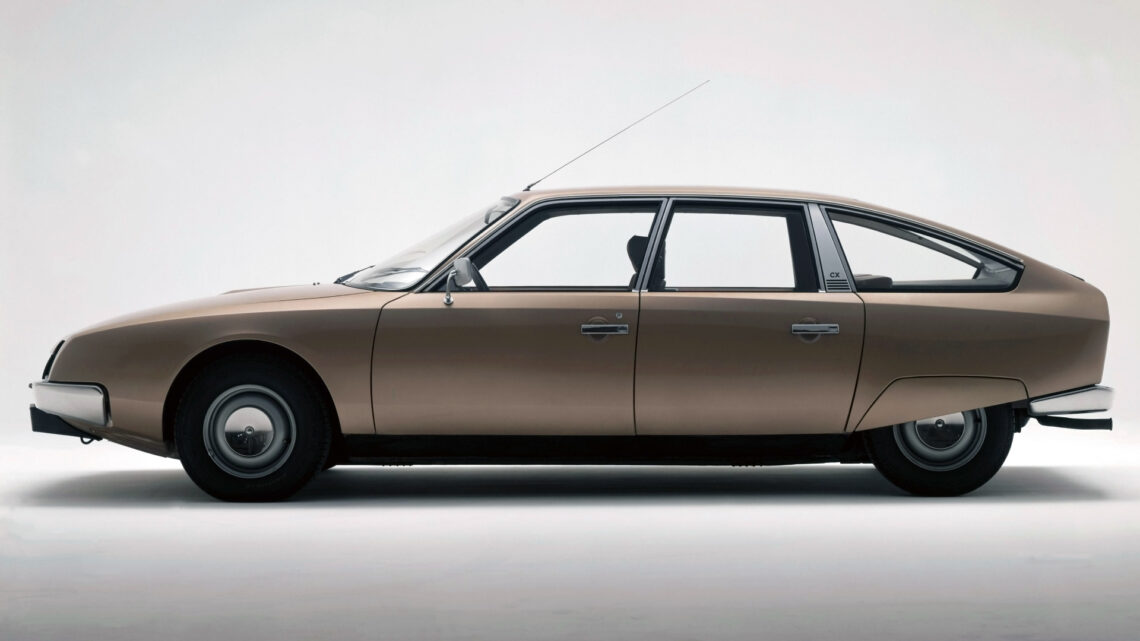
Engines Citroën CX
Initially, the Citroën CX was to receive a rotary engine. Citroën experimented with this more often in the early 1970s. Only just before introduction, however, a line was drawn through the entire rotary engine project because it could no longer become profitable. So that was a problem for the CX. Because the car was designed for compact rotary engines, the engine compartment is quite compact, but fortunately, among other things, the regular four-cylinder from predecessor DS fit in.
Eventually, the CX would become available with several four-cylinder engines ranging from 2.0- to 2.5-liter. This included, starting in the 1980s, a diesel, which as a Turbo-D was even for a while the fastest diesel sedan in the world. Speaking of speed, of course, the sporty GTi version cannot go unmentioned either.

Citroën CX Break
The regular Citroën CX also came as a 25 cm longer Prestige (which also received a slightly higher roof later in production), but the only really different body variant was the Break, an estate version. The CX Break was ten inches longer than the sedan and available with up to seven seats. Consequently, its high, straight roof made the CX Break one of the largest station wagons of its time. Even by today’s standards, it still offers a sea of space.
Many other body styles were built through outside body shops, by the way. From convertible versions and limousines to ambulances and van versions, topped by the six-wheeled Loadrunner from coachbuilder Tissier.
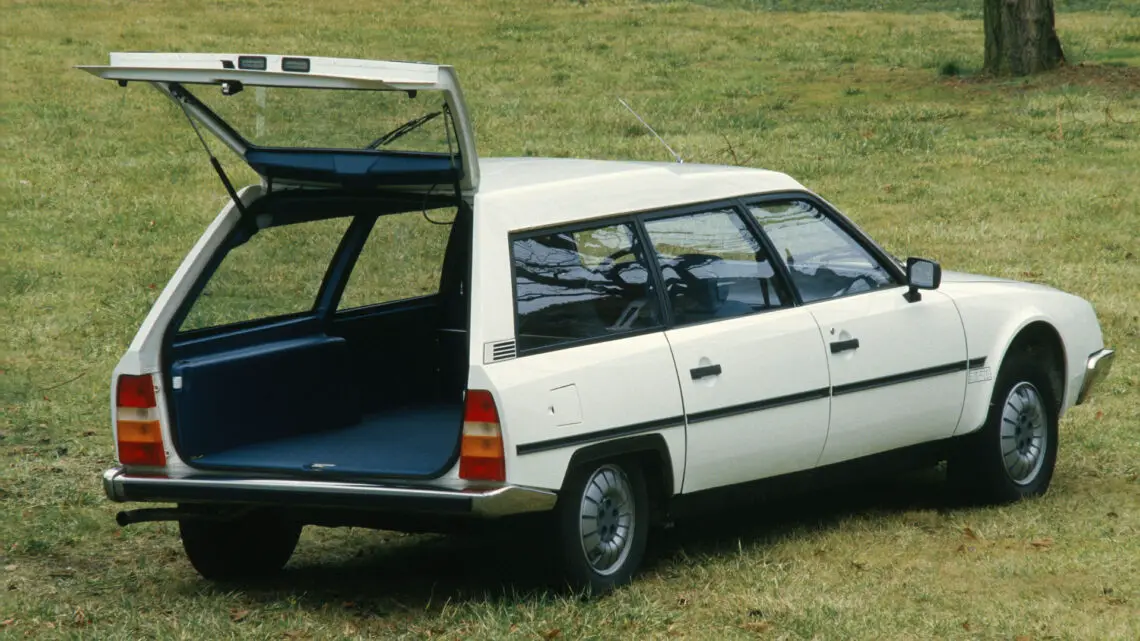
International career Citroën CX
Although the Citroën CX was sold in fewer countries than its predecessor ID/DS for financial reasons, the model still had a rich international career. Thus, the car was also sold (in fairly modest numbers) in China. The CX was also sold in a number of South American countries, sometimes through local production. In South Africa and Australia, the CX was also on the price lists.
Citroen had also been developing a North American version of the car, but just before introduction, U.S. regulations changed. New regulations for bumpers indirectly banned the adjustable ride height. Modifying the CX accordingly was too costly, and Citroën even withdrew from the American market entirely. Later, in the 1980s, some CXs were sold in the US through independent importers.
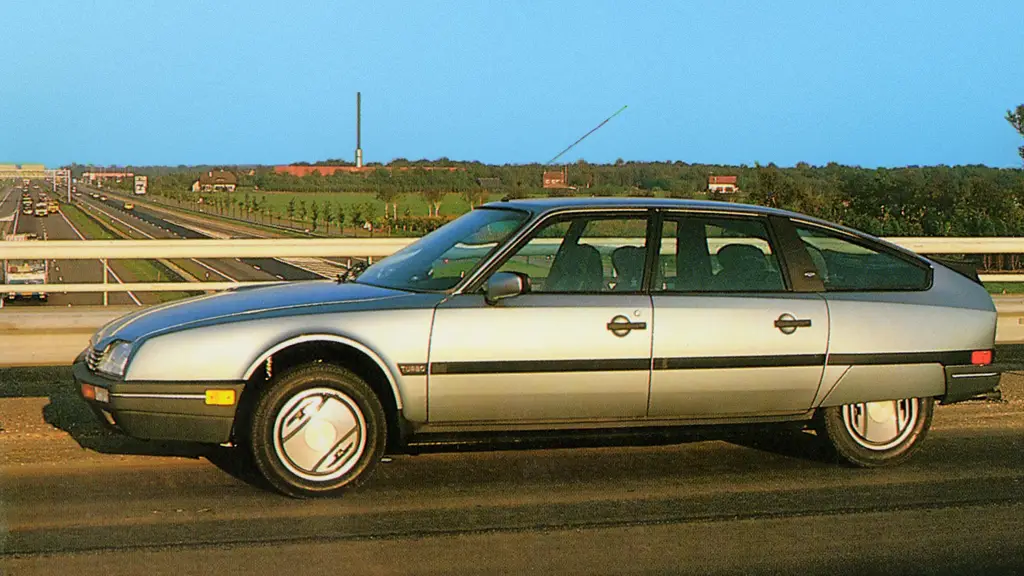
Good start, but also beginning of the end
Back to Europe. The Citroën CX got off to a good start in terms of sales, but also made a name for itself as a car with high maintenance costs. Remarkably, it was not because of advanced technology, but rather it was common parts and mechanics that drove up the garage bill. In doing so, the CX also faced stronger competition than its predecessor ID/DS had. A 1985 facelift resulted in little to no improvement in sales.
Although the Citroën CX was the best-selling PSA model in the luxury segment, new brand owner Peugeot was reluctant to invest in the car. Citroën started a number of projects for a serious, new successor, but Peugeot blew them all off. Its successor did not finally come until 1989, in the form of the futuristic Citroën XM. The CX Break was allowed to continue until 1991, the year in which the Break variant of the XM was also introduced.
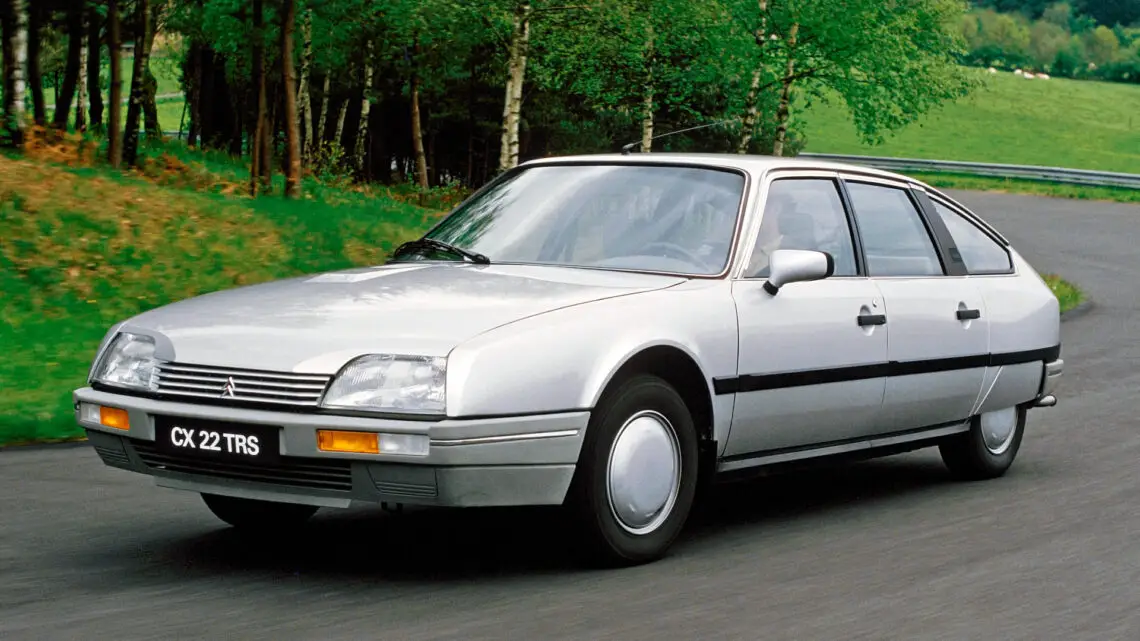
Citroën CX has many enthusiasts
The Citroën CX is one such car that, as it aged, actually became an instant favorite youngtimer and then oldtimer. The car has many enthusiasts and is seen by brand purists as the last true Citroën. Indeed, shortly after the introduction of the CX, Citroën was acquired by Peugeot and the PSA group was formed. The CX is also considered the last successful “big Citroën,” as later models failed to revive the brand’s strong position in the luxury segment.
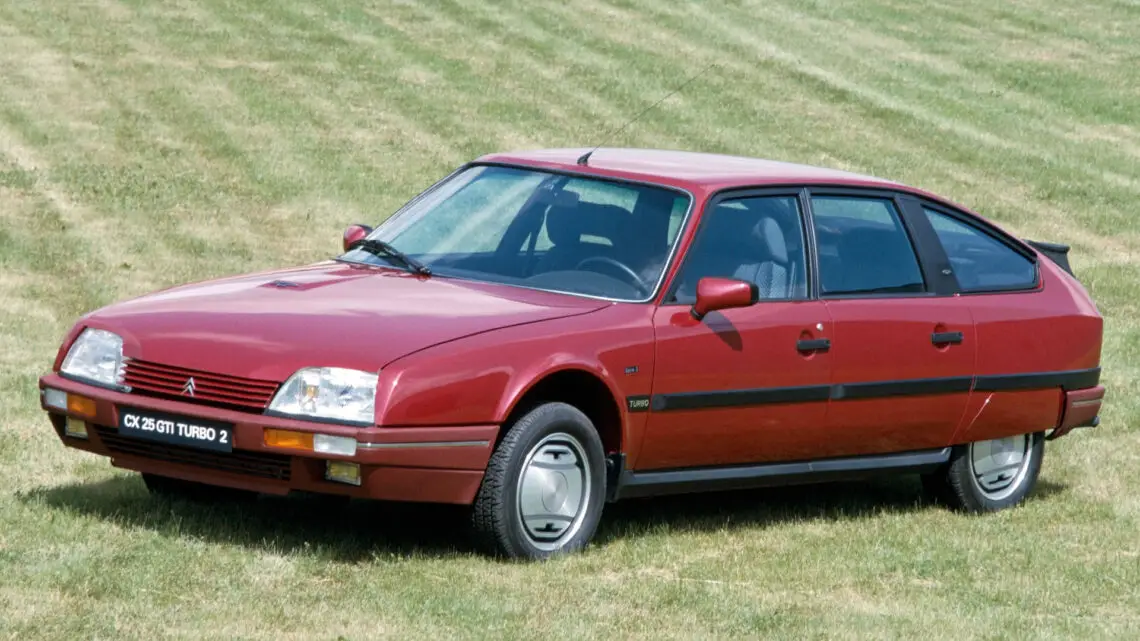
The spotted specimen
The Citroën CX we came across on a cold winter morning in an Amsterdam business park is a 1978 CX 2000. So a fairly early one. The car has been in the Netherlands since 2002, and the current owner has been floating down the road with it since 2015. There is not much left of the stateliness of the model on this one. He clearly had a hard life. We don’t often come across a CX like this, especially in the Netherlands.
Perhaps the Citroën CX is still used as a “daily driver” and therefore the owner does not think a thorough restoration is necessary. Such past glory is also something we like. It’s okay to see a car being used. Yet in this case, we also become a bit worried about the survival of this CX. However, all the RDW issues are in neat order, so who knows, maybe the undercarriage is kept in top condition. At the time of writing, the apk is still valid for a few weeks. We sincerely hope he passes the inspection….
